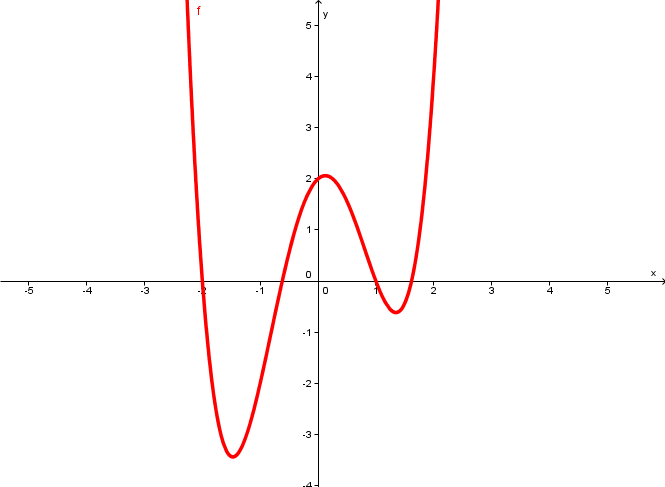MAT 103A Practice Exam 1
Problem 1: Determine if the triangle with vertices (3,-5), (2,4), and (1,1) is isosceles, equilateral, or neither.
Problem 2: Determine if the following are true or false. Explain why your answer is correct.
A. If (2,3) is a point on the graph of the function y = f(x) that is symmetric with respect to the y-axis, then (-2,-3) is also on the graph of y = f(x).
B. Let the slope of line r be 3/2 and the slope of line s be -2/3. If P is is the point of intersection of the two lines and if Q and R are points on lines r and s that are distinct from point Q, then the triangle with vertices P, Q, and R is a right triangle.
C. If f(x) = x2 + 3x - k and if f(1) = 5, then f(2) = 9.
D. A circle is never the graph of a function of y in terms of x.
E. If f(x) is an increasing function between 3 and 7 and if f(4) = 0 then f(5) cannot be negative.
Problem 3: List the intercepts and test for symmetry. 4x2 + 9y2 = 36
Problem 4: The sketch below shows part of the function y = f(x) that is symmetric with respect to the origin. Sketch the rest of the function.

Problem 5: Use a calculator to sketch the graph of y = x3 - 4x2 + x + 2. Then approximate the intercepts, the relative maximum and minimum, and where the function is increasing and where it is decreasing.
Problem 6: A waiter receives $8 an hour in base wages plus 15% of all receipts from the tables that he serves. Write a linear model that relates the waiter's hourly wage W when his total receipts is R dollars.
Problem 7: Find the center and radius of the circle x2 + y2 - 10x + 4y = 7. Then graph the circle.
Problem 8: Find the equation of the circle that has diameter with endpoints (-1,2) and (3,-1).
Problem 9: Find the domain of the function

Problem 10: If a ball is dropped from a building its height h off the ground in feet after t seconds is h(t) = -16t2 + 320. When will the ball hit the ground?
Problem 11: Find the domain and range of the function shown below. List any intercepts, symmetry with respect to the x-axis, y-axis, or the origin, any relative maximum and minimum, and the intervals where the function is increasing and where it is decreasing.

Problem 12: Find the average rate of change of the function f(x) = x3 - 2x + 3 from -1 to 2.